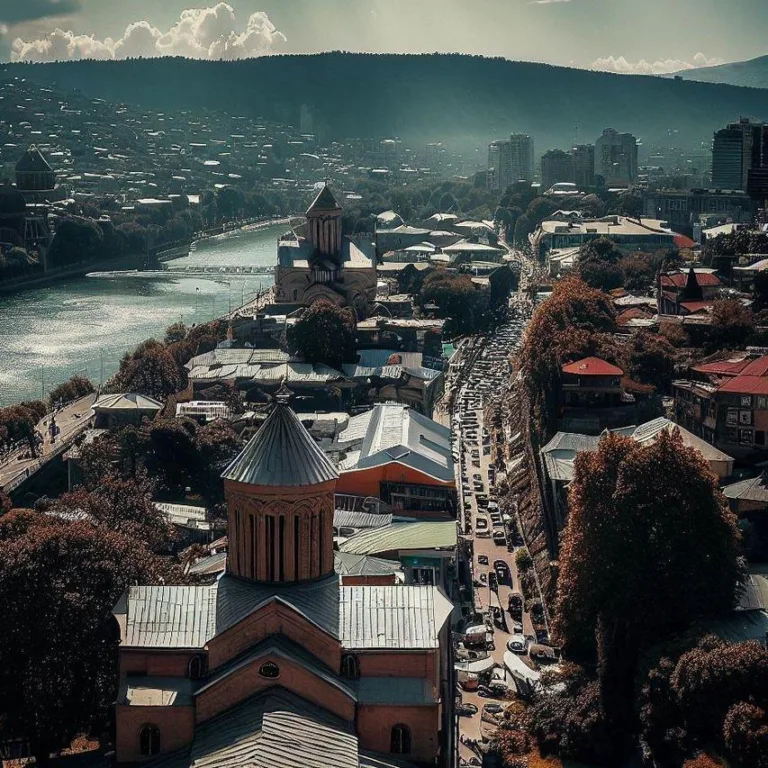Welcome to the captivating world of Tbilisi, the heart and soul of Georgia. Nestled in the scenic Caucasus region, this vibrant city is a mesmerizing blend of ancient history, modernity, and rich culture. In this article, we will delve deep into the essence of Tbilisi, exploring its history, culture, attractions, and much more. Join us on this journey to discover the magic of Tbilisi.
The history of tbilisi
Tbilisi’s history is a tapestry of influences, from the ancient times to the present day. Founded in the 5th century by King Vakhtang I Gorgasali, Tbilisi has witnessed the rise and fall of empires, including the Persian, Arab, Mongol, and Russian occupations. Each era left its mark on the city’s architecture, culture, and traditions.
One of the city’s most iconic symbols is the Narikala Fortress, perched on a hill overlooking the old town. This ancient fortress, built in the 4th century, has stood as a sentinel through centuries of change, a testament to the resilience of Tbilisi.
The rich cultural tapestry
Tbilisi is a cultural crossroads where East meets West. The city’s diverse population reflects its multicultural heritage, with Georgian, Armenian, Azerbaijani, and Russian communities coexisting harmoniously. This cultural fusion is evident in the city’s music, dance, and cuisine.
Georgian polyphonic singing, recognized as a UNESCO Intangible Cultural Heritage, is a soul-stirring experience that resonates through the city’s streets. Traditional dances, like the fiery Kartuli and elegant Acharuli, are expressions of joy and storytelling. And when it comes to cuisine, Tbilisi’s culinary scene is a gastronomic delight. Don’t miss out on trying khachapuri, a heavenly cheese-filled bread, and khinkali, delicious dumplings.
Architectural marvels
Tbilisi boasts a stunning blend of architectural styles, ranging from medieval churches and fortresses to the grandeur of neoclassical and Art Nouveau buildings. Stroll through the old town’s cobblestone streets, where you’ll discover quaint houses with wooden balconies, reminiscent of a bygone era.
Rustaveli Avenue, the city’s main artery, showcases Tbilisi’s modern side with its contemporary architecture, high-end boutiques, and bustling cafes. The futuristic Bridge of Peace, illuminated at night, is a striking contrast to the city’s historical landmarks.
Must-visit attractions
There’s no shortage of things to see and do in Tbilisi. Some of the city’s must-visit attractions include:
- The Holy Trinity Cathedral of Tbilisi, one of the largest Orthodox churches in the world.
- The Georgian National Museum, home to a vast collection of historical artifacts.
- Abanotubani, the district known for its ancient sulfur baths.
- Freedom Square, a central gathering place and site of important historical events.
- Botanical Garden of Tbilisi, a lush oasis in the heart of the city.
Frequently asked questions
1. What is the best time to visit Tbilisi?
The best time to visit Tbilisi is during the spring and autumn months when the weather is pleasant, and the city’s gardens and parks are in full bloom.
2. Is Tbilisi a safe city for tourists?
Yes, Tbilisi is generally considered a safe city for tourists. However, as with any travel destination, it’s advisable to take common-sense precautions and be aware of your surroundings.
3. What are some traditional Georgian dishes to try in Tbilisi?
When in Tbilisi, don’t miss trying khachapuri (cheese-filled bread), khinkali (dumplings), and mtsvadi (grilled skewers). These dishes are staples of Georgian cuisine.
As you explore Tbilisi, you’ll uncover countless hidden gems and experiences that make this city truly unique. From its rich history and culture to its modern vibrancy, Tbilisi is a destination that leaves an indelible mark on all who visit. So, pack your bags, and embark on a journey to discover the enchanting capital of Georgia.
Viz také:






